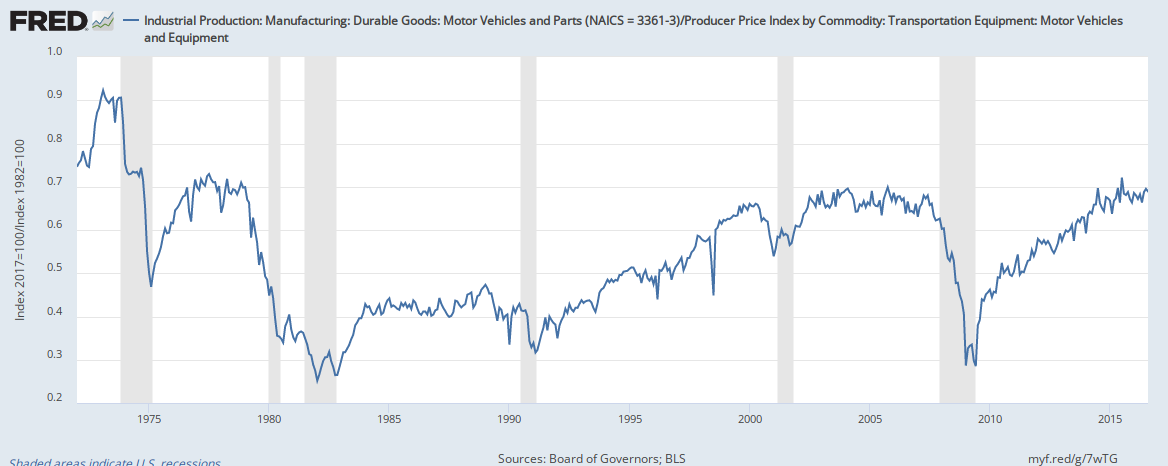 |
| Domestic Vehicle Production |
 |
| Domestic Industry Revenue |
The domestic US auto industry has by two metrics finally recovered from the Great Recession. The first two graphs present total industry output in unit terms and in revenue (deflated by the producer price index for motor vehicles and parts). Both are at the highest in 40 years. The industry has never surpassed the boom that immediately preceded the First Oil Crisis.
I remember that era well. As a college student in the summer of 1973 I worked at Chrysler Mack Stamping. Monday-Friday I worked 10 hour days, and to that added two 12-hour shifts on the weekends. For my 74 hours, between "regular" overtime and double time on Sundays I earned 96 hours pay. Anyway, it may be just as well that we've yet to repeat that level, as the boom (which coincided with booms in Japan and Europe) helped give rise to high inflation and the First Oil Crisis.
However, the level of manufacturing employment remains well below peak, as shown in the graph below. But that reflects productivity improvements: relative to 40 years ago, we need 40% few workers to produce the same number of vehicles. That's the graph at the bottom.
In every industry with which I'm familiar [the possible exception is garment production], over time manufacturing labor productivity consistently outstrips demand. Auto manufacturing jobs aren't going to return, ever. But the same is true for manufacturing jobs more generally. Now this shouldn't be surprising. Our population has more than doubled since 1945, but we today need only 30% as many farmers to feed us whiling generating a substantial surplus for export.
Oh, and China is undergoing the same transition: farmers are increasingly redundant, while factories are shedding workers as the economy moves away from labor-intensive goods.
 |
| Domestic Industry Employment |
 |
| Domestic Auto Manufacturing Labor Productivity |
No comments:
Post a Comment